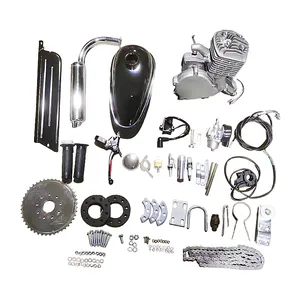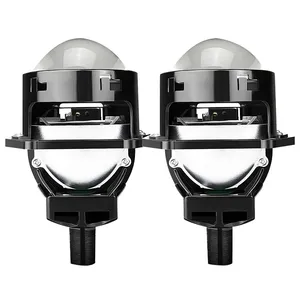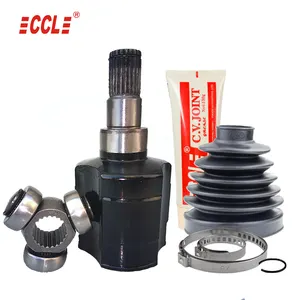Popular in your industry










































































































































































































Top categories
About turbo oil feed line
The turbo oil feed line is an integral component in the lubrication system of a turbocharged engine, tasked with the critical role of delivering oil to the turbocharger. This ensures the turbocharger operates efficiently, maintaining its temperature and preventing damage due to friction or overheating.
Types and Characteristics of Turbo Oil Feed Lines
Diverse types of turbo oil feed lines cater to different engine layouts and turbocharger designs. For instance, the ls turbo oil feed is specifically designed for the high-performance requirements of LS series engines, while the ls1 turbo oil feed is tailored for the nuances of LS1-specific turbo setups. Each type varies in length, diameter, and fitting type to match the unique flow characteristics and space constraints of the engine bay. High-performance vehicles may require lines with larger diameters or specialized fittings to handle increased oil flow rates, ensuring that the turbocharger receives adequate lubrication under demanding conditions.
Structure and Operation of Turbo Oil Feed Lines
The structure of a turbo oil feed line typically includes a series of components such as the hose itself, fittings, and sometimes an inline turbo oil restrictor. The hose must be flexible enough to accommodate engine movement while remaining durable to withstand high-pressure oil flow. Fittings are crucial for a secure connection between the line and the turbocharger, often designed to be resistant to stripping or leaking under the high temperatures and vibrations found in the engine compartment. The restrictor's role is to regulate the oil pressure, ensuring that the turbocharger is not over-lubricated which can lead to oil seal damage and subsequent leaks.
Materials and Their Properties
The choice of materials for turbo oil feed lines is critical. Stainless steel is favored for its high tensile strength and excellent resistance to corrosion and heat, making it ideal for the high-temperature environment of a turbo system. Plastic lines are often used in less demanding applications or where flexibility is a priority. Iron fittings may be utilized for their durability and tight seal, ensuring that connections remain secure over time. The materials are selected to provide a balance between flexibility, to absorb vibrations, and rigidity, to withstand pressure without bursting.
Business Usages and Applications
In the commercial realm, turbo oil feed lines are vital in sectors that rely on turbocharged engines for their heavy machinery, such as construction, agriculture, and transportation. These lines ensure that engines operate at peak efficiency, providing the necessary power for heavy lifting and long-haul transportation. In the automotive industry, high-quality turbo oil lines contribute to vehicle performance, which is crucial for businesses involved in logistics and delivery services, where downtime can mean lost revenue.
Functions and Tasks
The primary function of a turbo oil feed line is to supply a continuous flow of oil to the turbocharger, which is essential for its operation. It lubricates the moving parts, reducing friction and wear, and also carries away heat, helping to maintain an optimal operating temperature for the turbocharger.
Distinctive Features and Capabilities
Features such as heat shielding or braided stainless steel construction distinguish high-quality turbo oil feed lines from standard options. These features enhance the durability and performance of the feed line, ensuring that it can withstand the rigors of a high-performance engine. Unique selling points might include custom fitting options or pre-installed restrictors, which simplify installation and ensure proper oil flow rates.
Benefits and Positive Outcomes
Using a well-designed turbo oil feed line can lead to numerous benefits, including prolonged turbocharger life, improved engine performance, and reduced maintenance costs. By ensuring the turbocharger is properly lubricated, these lines help prevent costly breakdowns and improve overall vehicle reliability.
How to Use and Operate Effectively
Effective operation of a turbo oil feed line involves ensuring it is correctly installed, with no kinks or sharp bends that could impede oil flow. It should be checked regularly for signs of wear or damage, especially in high-stress areas near fittings or bends.
Choosing the Right Turbo Oil Feed Line
Selecting the right turbo oil feed line involves considering the engine type, turbocharger specifications, and the operating conditions it will be exposed to. It's important to match the line's specifications with the engine's oil pressure and flow requirements to ensure compatibility and optimal performance.
Cleaning and Maintenance Guidelines
Cleaning a turbo oil feed line typically involves flushing the line with an appropriate solvent to remove any debris or buildup. Regular maintenance checks should include inspections for any signs of leakage, damage, or corrosion, and immediate replacement if any issues are found.
Installation Tips
Installation of a turbo oil feed line should be done carefully to avoid cross-threading or over-tightening fittings, which can cause leaks. It's also important to route the line away from any sharp edges or heat sources that could cause damage over time.
Target Audience and Meeting Needs
The target audience for turbo oil feed lines includes automotive enthusiasts, professional mechanics, and industries that utilize turbocharged engines. These products are designed to meet the rigorous demands of high-performance engines, providing reliability and efficiency for users who prioritize engine care and maintenance.
How does a turbo oil feed line enhance engine performance?
A turbo oil feed line enhances engine performance by ensuring that the turbocharger is adequately lubricated and cooled. This contributes to a more responsive and efficient turbo system, which translates to better engine performance and power output. By maintaining the turbocharger in peak condition, the feed line helps in achieving optimal fuel efficiency and reducing emissions.
What are the signs of a failing turbo oil feed line?
Signs of a failing turbo oil feed line include oil leaks, unusual noises from the turbocharger due to inadequate lubrication, and a decrease in engine performance. If the line is blocked or damaged, it can lead to turbocharger failure due to overheating or lack of lubrication. Regular inspections can help detect these issues early on.
How to ensure the longevity of your turbo oil feed line?
To ensure the longevity of your turbo oil feed line, it is essential to follow the manufacturer's maintenance schedule, use high-quality oil suited for turbocharged engines, and regularly inspect the line for any signs of wear or damage. Prompt replacement of the feed line when necessary can prevent more significant issues with the turbocharger and engine.










































